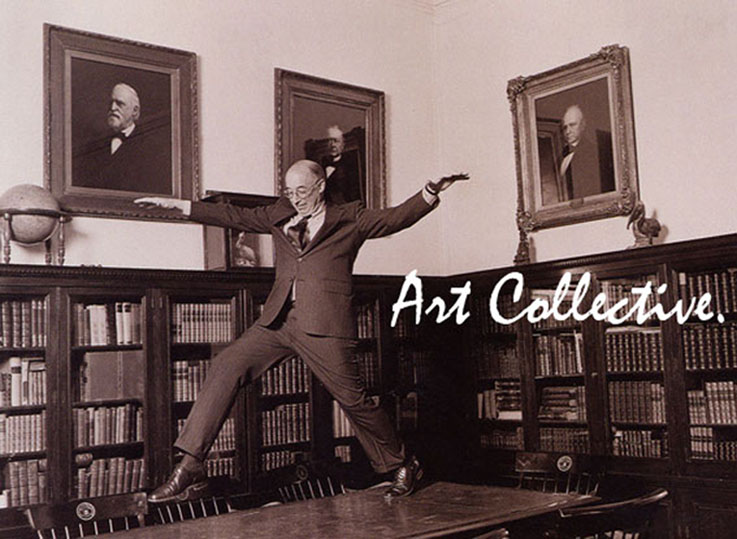Australian Portraits 1880 – 1960 is a major touring exhibition of The National Gallery’s collection of portraits by Australian artists. The exhibition, consisting of 54 paintings by 34 artists, is in its last week at the University of Queensland Art Gallery finishing on the 27th of March.
This exhibition, despite the boring title, is fantastic. The calibre and range of artists is very impressive, boasting works by Frederick McCubbin, George Lambert, Margaret Preston, Grace Cossington-Smith, Albert Tucker, Sidney Noland, Russel Drysdale, William Dobell and many more. The figures in the portraits range from friends, family, artists and poets to persiennes, flappers, bushranger and serial killers, each portrait concealing and revealing certain aspects of the sitter.
The exhibition was broken up into four categories. The first two, ‘The Victorians 1880-1900’ and ‘The Edwardians 1900-1920’ were hung on rich red walls which complemented, and in a bizarre way authenticated, the viewing experience of these traditional paintings as it creates the feeling of an old world salon. The standouts for me in these first two sections were portraits by Tom Roberts & George W Lambert.
Tom Roberts, 'Study of Lena Brasch' c.1893, via NGA
Tom Roberts, Study of Lena Brasch c.1893 is an unfinished, vibrant portrait full or energy and excitement. Roberts captures the beauty and elegance of his sitter by portraying her as shy and demure with her eyes cast downward and face turned from the audience, as if she was hesitant to reveal too much of herself. Yet Roberts has given her life and personality through the use of thick bold lines, dramatic splashes of bright colour and rapid brushstrokes. This style so untypical of Roberts is only enhanced by the juxtaposition of some of his finished portraits such as An Australian Native 1888, which is a full-length portrait depicting life like realism.
Tom Roberts, 'An Australian Native' 1888 via NGA
There are two George W Lambert portraits, Chesham St 1910 and Weighing the Fleece 1921, both show the incredible skill and attention to detail of the artist. Chesham St is a self-portrait of Lambert baring his chest in a brazen and unashamed way. This presentation of himself definitely reveals a lot of his personality and validates the claims that he was an extrovert and loved being the centre of attention.
George W Lambert, 'Chesham St' 1910 via NGA
George W Lambert, 'Weighing the Fleece' 1921 via NGA
The second half of the exhibition contains the sections ‘The Modernists 1920-40’ and ‘Forties and Fifties’. With the new outlook on Modern art in Australia came the new approaches to portraiture. This part of the exhibition hosts more female artists than any other section with works by Grace Crowley, Margaret Preston, Nora Heysen and Grace Cossington-Smith, suggesting that Australian Modernism flourished through females.
The exhibition then finishes with the ‘Forties and Fifties’, which compared to ‘The Modernists 1920-40’ is a lot more male dominated with strong portraits exploring eternal questions. One of the more interesting portraits is Ian Fairweather’s, who depicts himself in his 1962 self-portrait not with paint but as paint, embodying the broad gestural brushstrokes as an expression of himself.
Ian Fairweather, 'Self Portrait' 1962 via NGA
Lastly, and what I personally consider the best portrait present, is William Dobell’s Sketch Portrait of Dame Mary Gilmore. In this portrait Dobell does not just paint a person - he captures a character. The small painting of the famous Australian poet is a predecessor for the portrait of Dame Mary Gilmore that can be found on the Australian $10 note and won Dobell the 1943 Archibald. The quick expressive strokes, muted colour scheme and elongated neck reveal the sitter’s dignity and character, which I believe is an essential element to a great portrait.
William Dobell, 'Sketch portrait of Dame Mary Gilmore' c.1956 via NGA
The best way to view this exhibition is with, as the curator Dr Anna Grey said, a reveal and conceal attitude. There is no such thing as an absolute portrait and many of the paintings present, especially the early ones, are constructs of how the sitter wished to be viewed. So go have a look at the exhibition before it moves on and make up your own opinions on the fantastic range of Australian portraits.
Ashleigh Clarke
More images below
Dusan Marek, 'My Wife' c.1952 via NGA
Margaret Preston, 'Flapper' 1925 via NGA
Agnes Goodsir, 'The Parisienne' 1924 via NGA
Grace Cossington-Smith, 'Study of Head: Self Portrait' 1916 via NGA
Albert Tucker, 'A Man's Head' 1946 via NGA





























